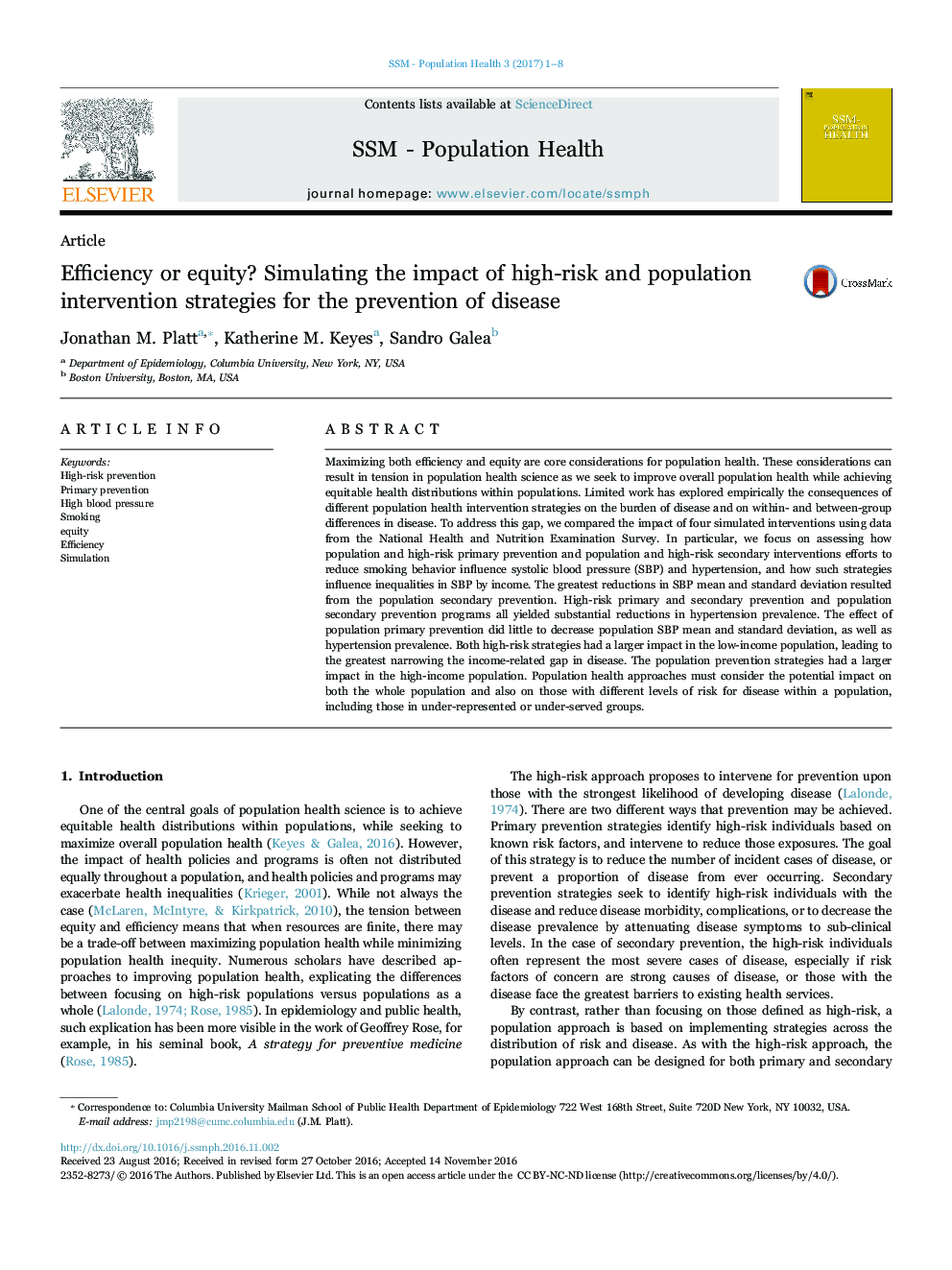| Article ID | Journal | Published Year | Pages | File Type |
|---|---|---|---|---|
| 5123227 | SSM - Population Health | 2017 | 8 Pages |
â¢A central goal in population health is to maximize overall population health, while minimizing health inequalities within populations.â¢A greater understanding of these potential trade-offs can be gained through simulations and sensitivity analyses.â¢This study sought to understand the implications of four different strategies on the population prevalence and distribution of high systolic blood pressure.â¢The greatest reduction in SBP mean and standard deviation resulted from the population secondary prevention, while high-risk primary and secondary prevention and population secondary prevention all yielded substantial reductions hypertension.â¢Efforts to improve overall population health may disadvantage some groups; whether equity or efficiency is preferable is in part a matter of values.
Maximizing both efficiency and equity are core considerations for population health. These considerations can result in tension in population health science as we seek to improve overall population health while achieving equitable health distributions within populations. Limited work has explored empirically the consequences of different population health intervention strategies on the burden of disease and on within- and between-group differences in disease. To address this gap, we compared the impact of four simulated interventions using data from the National Health and Nutrition Examination Survey. In particular, we focus on assessing how population and high-risk primary prevention and population and high-risk secondary interventions efforts to reduce smoking behavior influence systolic blood pressure (SBP) and hypertension, and how such strategies influence inequalities in SBP by income. The greatest reductions in SBP mean and standard deviation resulted from the population secondary prevention. High-risk primary and secondary prevention and population secondary prevention programs all yielded substantial reductions in hypertension prevalence. The effect of population primary prevention did little to decrease population SBP mean and standard deviation, as well as hypertension prevalence. Both high-risk strategies had a larger impact in the low-income population, leading to the greatest narrowing the income-related gap in disease. The population prevention strategies had a larger impact in the high-income population. Population health approaches must consider the potential impact on both the whole population and also on those with different levels of risk for disease within a population, including those in under-represented or under-served groups.
